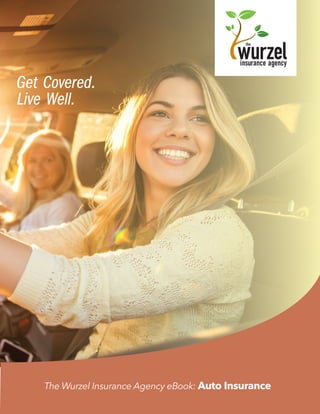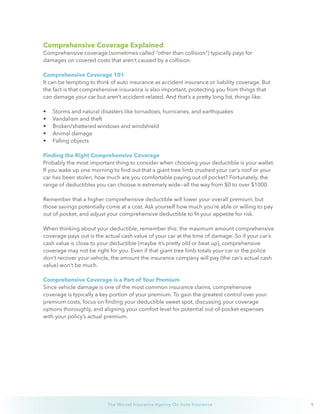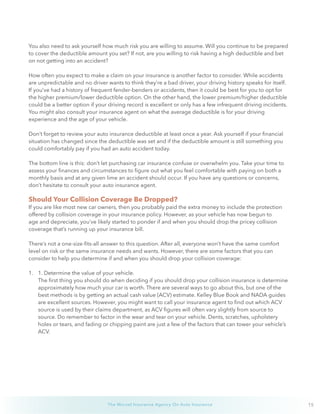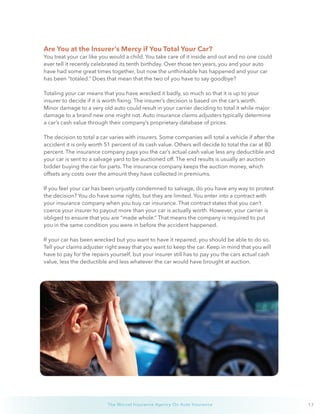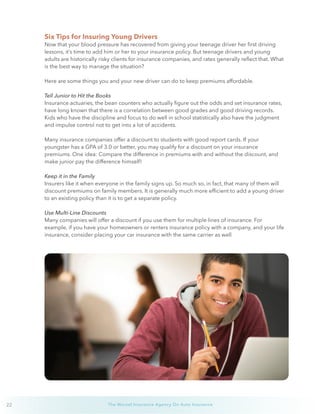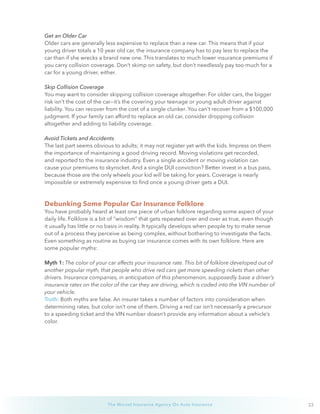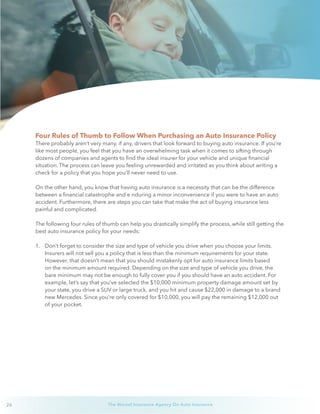This document discusses various types of auto insurance coverage including liability coverage, personal injury protection, uninsured motorist coverage, medical payments coverage, collision coverage, and comprehensive coverage. It explains what each type of coverage protects against and things for drivers to consider when determining coverage limits and deductibles, such as their risk tolerance and financial ability to pay out of pocket expenses. The document stresses that state minimum coverage requirements may not provide adequate protection and recommends drivers evaluate their individual needs to ensure they have sufficient coverage.
